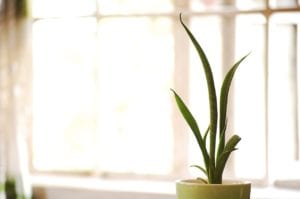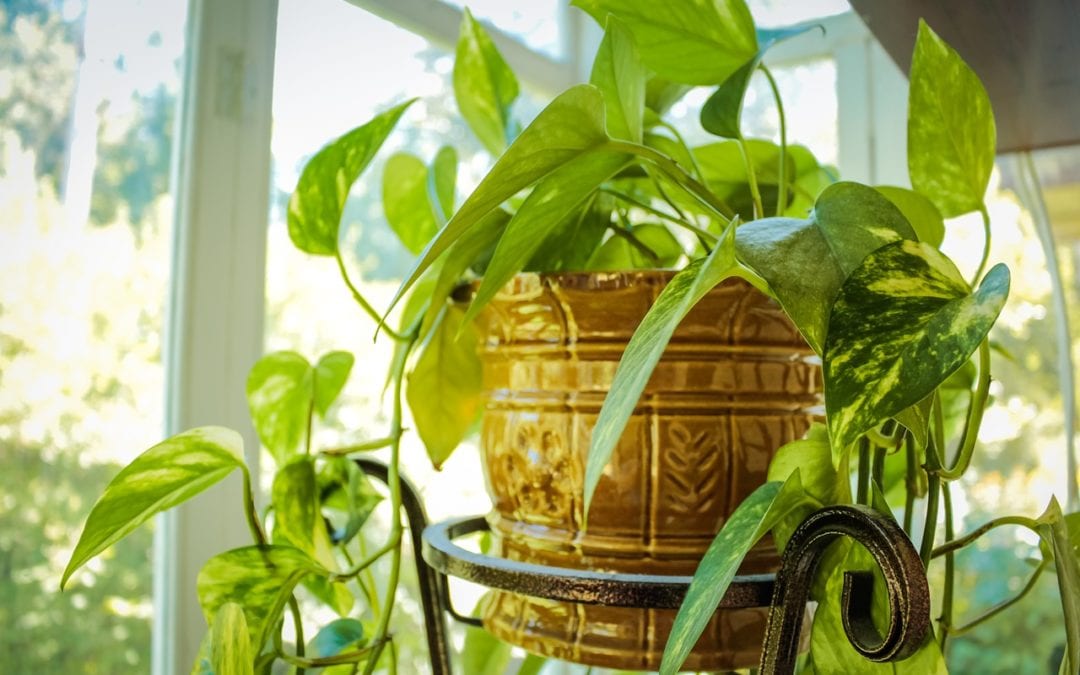Besides true aficionados of houseplants, many of us run the gamut of neglecting houseplants during our love affair with spring and fall outdoor gardening, only to return to them for the comfort of their green leaves during the dull, drab winter. When winter comes along and we head indoors more often than outdoors, our houseplants provide us solace when we are yearning to be working in our gardens. While our attention is turned to our houseplants, we must be careful not to heap too much attention on them.
Don’t misunderstand me; your houseplants definitely deserve to be loved. It’s just that more often than not, during winter, many houseplants succumb to being loved to death. We suddenly realize we can’t remember the last time Petey Pothos or Farah Fern has been watered or fed and we vow to make it up to them. We are visiting with our houseplants more often now that we are stuck inside so there is no excuse not to give them a daily watering, right? Wrong! Winter care of houseplants actually slows down quite a bit, and overcompensating for lackluster care through the earlier part of the year can end up being detrimental to your houseplants. Let’s take a look at why.


Watering and Fertilizing Houseplants Through Winter
Houseplants do not need fertilizer throughout the winter. Winter is a period of time when your houseplants are resting. There is no need to offer houseplants fertilizer when they are in a stage of doing little growing. You’d be wasting money on fertilizer and upsetting the natural growing cycle of houseplants.
The same reason that houseplants don’t need fertilizer is the same reason houseplants don’t need as much water during the winter. Growth is slowed down, and nutrients and water is not as much of a demand for houseplants’ vitality. Overwatering your houseplant could cause root rot and eventual death. Overwatering plants throughout winter when the houseplant is taking up as much water also leaves the soggy soil susceptible to growing a fungus, which can lead to a fungus gnat infestation. I wouldn’t wish a fungus gnat infestation on my worst enemy!
Don’t let your eyes be the judge of when you need to water your houseplants. Use your finger. Even though the top of the soil may look dry, you need to stick your finger down in it and only water your houseplants when the soil is dry at least 2 inches down.


What to Offer Houseplants Through Winter
What you can do for your houseplants throughout winter is to make sure they are getting the sunlight that they need. Sunlight shifts during winter and is not as strong as it is during summertime. You may need to move houseplants to a south-facing or west-facing window to get the most sunlight possible. Rotate your houseplants each time you water them to make sure each side of your houseplants is receiving an equal amount of sunlight to ensure uniform growth. Make sure not to place houseplants on windowsills where their foliage could touch a cold window or where they might feel a frosty draft.
You can also make sure your houseplants are comfy with the temperature and humidity in your home. Winter causes humidity to go by the wayside when we turn on our heaters that dry up the air in our homes. Setting your houseplants on a drainage saucer with a layer of rocks or pebbles and a little bit of water will create needed humidity for your plants. Just make sure your pots aren’t sitting in water, the pebbles should offer enough of a barrier. As for the temperature in your home, the most important thing is to keep your houseplants away from areas where the temperature fluctuates. Try not to situate your houseplants by radiators, directly under vents, by drafty windows, and by all means move your houseplants away from the fireplace before you stoke up your logs!
With winter coming up, it’s time to enjoy gardening in the great indoors and I sure hope this blog gets you off on the right foot!
~The Happy Gardener, Lisa Mulroy

